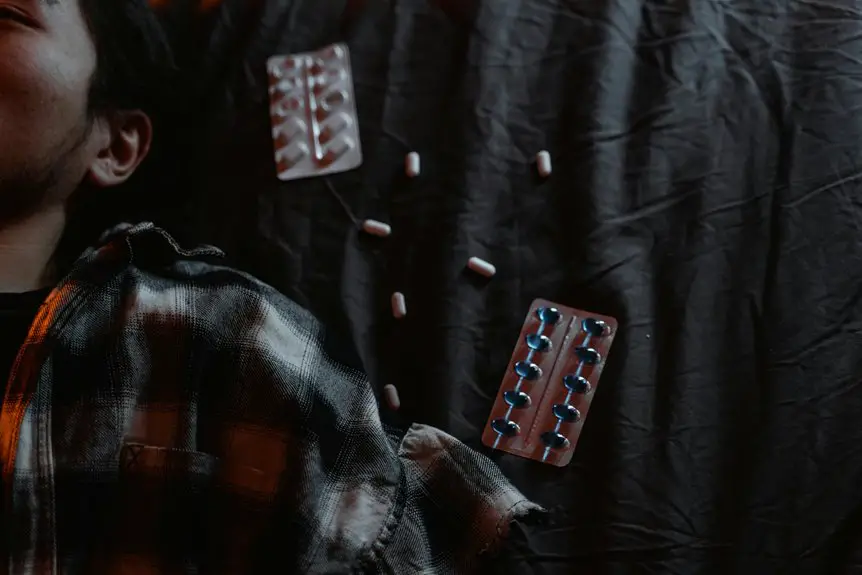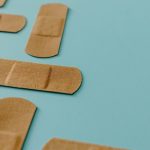If you’re wondering whether lyocell pills over time, you’ll be glad to know it resists pilling better than many fabrics. Its long, smooth fibers reduce friction, so you’ll notice fewer pills even with regular wear. Lyocell’s natural strength keeps it durable, holding up well to everyday wear and washing when cared for properly. With gentle washing and mindful storage, your lyocell clothes can stay soft and strong. Keep going to discover how to maintain and protect your lyocell garments.
Table of Contents
Key Takeaways
- Lyocell generally resists pilling better than many synthetic fabrics due to its smooth surface and long, continuous fibers.
- The fabric’s tightly packed structure and natural fiber strength reduce friction, minimizing wear and tear over time.
- Pilling can occur in high-friction areas but is less common compared to blends with short fibers.
- Proper care, like gentle washing and air drying, significantly reduces pilling and maintains fabric durability.
- Lyocell’s durability and resistance to moisture make it a strong, long-lasting fabric when cared for correctly.
What Is Lyocell Fabric Made From?
Lyocell fabric comes from wood pulp, usually sourced from eucalyptus, beech, or spruce trees.
When you wear lyocell, you’re experiencing a fabric made through a process that dissolves the wood pulp into a liquid solution. This solution is then spun into fibers, which are woven or knitted into fabric.
You’ll find lyocell is classified as a type of rayon but made using a more eco-friendly, closed-loop process that recycles almost all chemicals and water.
Because it’s derived from natural wood fibers, lyocell feels soft and smooth against your skin. Its production method also means you’re getting a fabric that’s both sustainable and biodegradable.
The Natural Properties of Lyocell Affecting Durability
Although you might expect a fabric made from wood pulp to be fragile, its natural fibers give it surprising strength and resilience. Lyocell’s fibers have a smooth surface and a tightly packed structure, which helps reduce friction and wear. Plus, its ability to absorb moisture without weakening means it stays durable even when wet.
Here’s a quick look at key natural properties influencing lyocell’s durability:
| Property | Effect on Durability |
|---|---|
| Fiber Smoothness | Reduces friction, lowering abrasion |
| Moisture Absorption | Maintains strength when damp |
| Fiber Length | Longer fibers mean fewer weak points |
You can count on lyocell to hold up well through everyday use thanks to these traits.
Common Causes of Pilling in Fabrics
When fibers rub against each other or rough surfaces, they start to break and tangle, creating tiny balls known as pills. You’ll often notice pilling in areas that experience frequent friction, like under your arms or at the cuffs of your sleeves.
Fabric type plays a big role—blends with short fibers tend to pill more because shorter fibers loosen and form pills easily. Washing habits also contribute; harsh cycles and abrasive detergents can weaken fibers, accelerating pilling.
Even how you wear and care for your clothes matters—constant rubbing against bags, seatbelts, or other materials can cause pills to form. Understanding these causes helps you take better care of your garments, reducing pilling and keeping fabrics looking fresh longer.
Does Lyocell Fabric Tend to Pill?
You might wonder if lyocell fabric pills easily.
Its natural fibers generally resist pilling better than many synthetics, but factors like friction and washing methods can still cause issues.
Knowing how to care for lyocell properly helps you keep it smooth and looking new.
Pilling Resistance Characteristics
If you’ve ever worn lyocell fabric, you might wonder how it holds up against pilling.
Lyocell is known for its smooth, soft texture and relatively good resistance to pilling compared to other fibers. Thanks to its long, continuous fibers, lyocell tends to produce fewer pills, maintaining a cleaner look over time.
However, while it generally resists the formation of those pesky little balls of fiber, no fabric is completely pill-proof.
Lyocell’s inherent strength and smooth surface reduce friction, which helps prevent pills from forming quickly.
So, if you’re looking for a fabric that stays smooth and pill-free longer, lyocell is a strong contender.
Just remember, its pilling resistance makes it durable but not immune to wear entirely.
Factors Influencing Pilling
While lyocell generally resists pilling better than many other fabrics, several factors influence whether it will pill over time.
You’ll find that the fabric’s quality plays a big role—higher-grade lyocell tends to pill less. The way the fabric is woven or knitted also matters; tighter weaves reduce friction and minimize pills.
Your activities impact pilling too—constant rubbing, like from backpacks or seat belts, can cause fibers to break and form pills.
Additionally, blending lyocell with other fibers, especially synthetics, might increase pilling potential. Environmental factors such as exposure to harsh conditions can weaken fibers, making pills more likely.
Understanding these factors helps you anticipate how your lyocell garments will hold up as you wear them regularly.
Care Tips to Prevent
How can you keep your lyocell garments looking fresh and minimize pilling?
First, always wash them inside out on a gentle cycle with cold water to reduce friction. Use a mild detergent and avoid bleach or fabric softeners, which can weaken fibers.
Skip the dryer and air dry your lyocell clothes instead; heat can damage the fibers and increase pilling.
When ironing, use a low heat setting and place a cloth between the iron and fabric.
Store your lyocell items properly—fold them rather than hanging to prevent stretching.
Finally, avoid wearing lyocell garments under rough layers or accessories that may cause abrasion.
How Washing and Care Influence Lyocell’s Texture
Because lyocell fibers are delicate, the way you wash and care for them directly shapes their texture and longevity.
You should always opt for gentle cycles with cold water to prevent weakening the fibers. Avoid harsh detergents and fabric softeners, as they can leave residues that stiffen the fabric and encourage pilling. Instead, choose mild, enzyme-free detergents designed for delicate fabrics.
When drying, skip the dryer and air-dry your lyocell items flat or hang them to retain their smooth, soft feel. Over-washing or using hot water can break down the fibers, causing roughness and reducing lifespan.
Comparing Lyocell to Other Fabrics in Terms of Pilling
When you compare lyocell to other common fabrics, you’ll notice it resists pilling better than many natural fibers like cotton and wool.
Lyocell’s smooth fibers reduce friction, which is the main cause of pilling, so your clothes stay looking fresh longer. Unlike cotton, which tends to pill more quickly due to its shorter fibers, lyocell maintains a cleaner surface even after repeated wear.
Lyocell’s smooth fibers cut friction, keeping clothes looking fresh and pill-free longer than cotton.
Wool, while warm, often pills because of its coarse texture, making lyocell a softer, more pill-resistant alternative.
Compared to synthetic fabrics such as polyester, lyocell pills less because it’s less prone to static and fiber breakage.
Tips to Prevent Pilling on Lyocell Garments
Lyocell’s natural resistance to pilling gives it an edge over many fabrics, but taking a few careful steps can help keep your garments looking their best even longer.
You can minimize pilling by treating your lyocell pieces gently during washing and wearing. Here are some practical tips:
- Wash lyocell garments inside out on a gentle cycle with cold water to reduce friction.
- Avoid using harsh detergents or bleach, which can weaken fibers and encourage pilling.
- When drying, opt for air drying or a low-heat setting to prevent fiber damage.
Extending the Lifespan of Your Lyocell Clothing
You can extend the life of your lyocell clothing by washing it gently and avoiding harsh detergents.
Store your garments properly to prevent wrinkles and damage, and don’t hesitate to repair small tears or loose threads early on.
These simple steps will keep your favorite pieces looking great for longer.
Proper Washing Techniques
Proper washing techniques can greatly extend the lifespan of your lyocell clothing. To keep your garments looking fresh and prevent pilling, you need to handle them with care during laundry.
First, always wash lyocell in cold water to avoid shrinking and maintain fabric integrity. Next, choose a gentle cycle on your washing machine or hand wash to reduce agitation, which can cause fibers to break down. Finally, avoid harsh detergents; opt for mild, liquid detergents that are free from bleach or enzymes.
- Use a mesh laundry bag to protect your lyocell items.
- Turn garments inside out to minimize surface friction.
- Skip the dryer; air dry flat or hang to keep the fabric smooth.
Following these tips guarantees your lyocell stays soft and durable longer.
Storage and Care Tips
After mastering the right washing methods, paying attention to how you store your lyocell garments can further extend their lifespan.
Always hang your lyocell clothes on padded or wooden hangers to maintain their shape and prevent stretching. Avoid overcrowding your closet, as this can cause unnecessary friction and wrinkles.
If you prefer folding, make sure to store them in a cool, dry place away from direct sunlight to prevent color fading. Use breathable garment bags for long-term storage to protect from dust and pests without trapping moisture.
Keep your lyocell items away from sharp objects or rough surfaces that could snag the fabric.
Repairing Minor Damages
Though lyocell is a durable fabric, small tears and snags can happen over time, especially with frequent wear. You can easily extend your lyocell clothing’s life by addressing these minor damages promptly.
Start by gently trimming any loose threads to prevent further unraveling. If you notice a small hole or tear, use a needle and thread matching your garment’s color to sew it carefully by hand.
For snags, avoid pulling the fabric; instead, use a needle to tuck the snagged fiber back into place.
Remember these quick fixes:
- Trim loose threads carefully.
- Hand-sew small tears with matching thread.
- Tuck snags gently without pulling.
Frequently Asked Questions
Can Lyocell Be Blended With Other Fibers to Reduce Pilling?
You can blend lyocell with fibers like polyester or cotton to reduce pilling. This mix enhances durability and softness, helping your garments last longer while maintaining comfort and minimizing wear and tear from regular use.
Is Lyocell Suitable for Sensitive Skin?
Did you know 85% of people with sensitive skin prefer lyocell? You’ll find lyocell’s smooth, breathable fibers gentle and hypoallergenic, making it perfect for sensitive skin and reducing irritation compared to synthetic fabrics.
How Eco-Friendly Is Lyocell Production Compared to Cotton?
You’ll find lyocell production much more eco-friendly than cotton’s since it uses less water, recycles solvents, and relies on sustainably sourced wood. It reduces environmental impact, making it a greener choice for your wardrobe.
Does Lyocell Fabric Shrink After the First Wash?
You might notice slight shrinkage after the first wash, but lyocell generally holds its shape well. To avoid surprises, wash it in cold water and air dry; that helps maintain its fit and feel over time.
Can Lyocell Be Used for Upholstery or Home Textiles?
You might not expect it, but lyocell works well for upholstery and home textiles. It’s soft, durable, and eco-friendly, so you’ll enjoy comfy furniture and stylish decor that’s gentle on both you and the planet.
- Does Chiffon Fabric Stink - July 15, 2025
- Does Chiffon Fabric Affect the Economy - July 15, 2025
- Does Cotton Fabric Have a Nap - July 15, 2025







